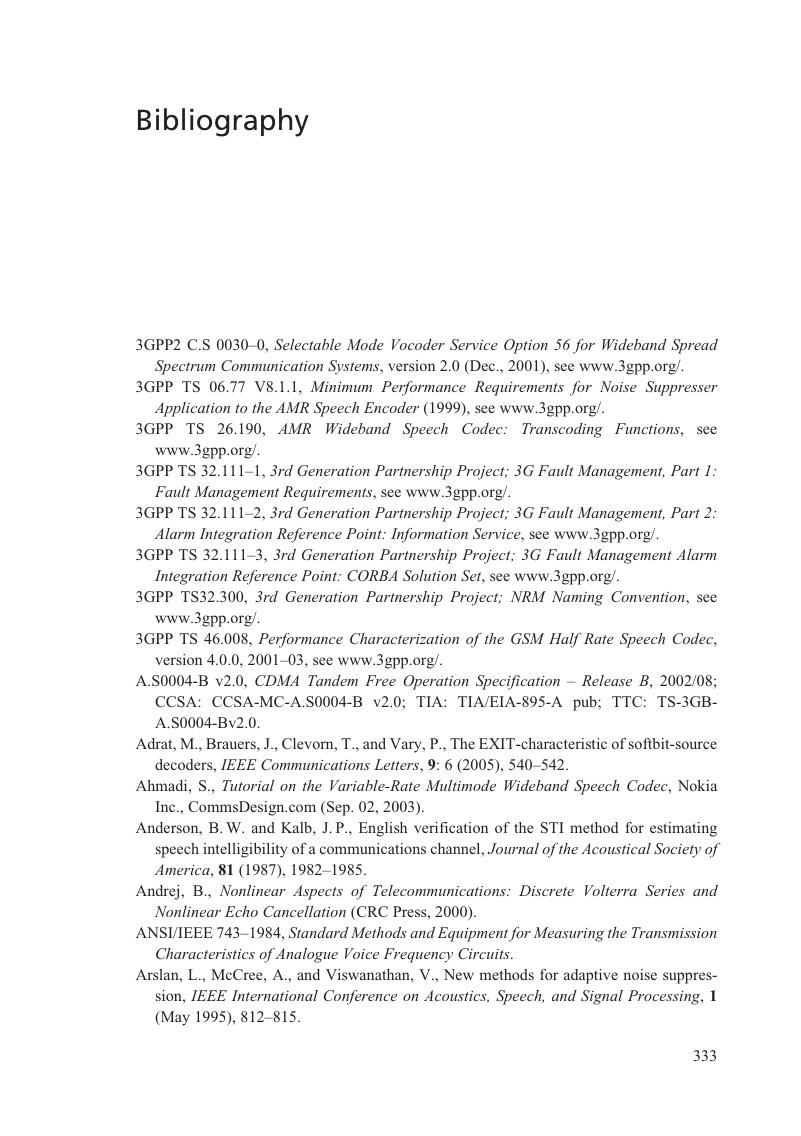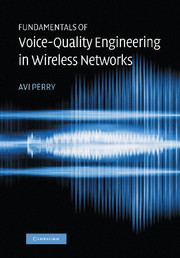Book contents
- Frontmatter
- Contents
- Preface
- List of abbreviations
- Introduction
- Part I Voice-quality foundations
- Part II Applications
- Part III Wireless architectures
- Part IV A network operator's guide for selecting, appraising, and testing a VQS
- Part V Managing the network
- Part VI Afterthoughts and some fresh ideas
- Part VII Recordings
- Glossary of common voice-quality systems terminology
- Brief summary of echo cancelation and VQS major standards
- Brief summary of key voice-quality assessment standards
- Bibliography
- Index
- References
- Frontmatter
- Contents
- Preface
- List of abbreviations
- Introduction
- Part I Voice-quality foundations
- Part II Applications
- Part III Wireless architectures
- Part IV A network operator's guide for selecting, appraising, and testing a VQS
- Part V Managing the network
- Part VI Afterthoughts and some fresh ideas
- Part VII Recordings
- Glossary of common voice-quality systems terminology
- Brief summary of echo cancelation and VQS major standards
- Brief summary of key voice-quality assessment standards
- Bibliography
- Index
- References
Summary

- Type
- Chapter
- Information
- Fundamentals of Voice-Quality Engineering in Wireless Networks , pp. 333 - 350Publisher: Cambridge University PressPrint publication year: 2006



